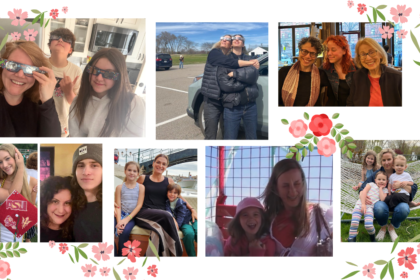As we age gracefully, our bodies undergo various changes and our eyesight isn’t exempt from the natural course of time. One common concern that many women face as they grow older is night blindness, scientifically known as nyctalopia.
Night blindness can be a challenging condition, affecting our ability to see clearly in low-light conditions, making nighttime activities a bit more daunting. We’re here to help shed some light (pun intended) on what night blindness is, its potential causes and practical tips on how to improve your vision in dimly lit roadways.
Understanding Nyctalopia
Nyctalopia is a condition characterized by difficulty seeing in low-light conditions or at night. The primary cause of night blindness is a deficiency in vitamin A, a crucial nutrient for maintaining healthy eyesight. However, other factors can contribute to or exacerbate this condition, such as aging, certain medications, and underlying eye conditions like cataracts or retinitis pigmentosa.
Treatment and Management
While night blindness can be a concern, there are various ways to address and manage this condition. It’s essential to consult with your healthcare provider to determine the root cause of your night blindness and receive personalized advice. In the meantime, consider the following general suggestions to enhance your nighttime vision:
Nutrition and Supplements
Ensure you are getting an adequate amount of vitamin A in your diet, either through food sources like carrots, sweet potatoes, and leafy greens or through supplements recommended by your healthcare provider.
AARP is one resource that provides valuable information on nutrition and eye health.
Regular Eye Exams
Schedule regular eye examinations to monitor and address any changes in your vision. Early detection of eye conditions can help in effective management.
The American Academy of Ophthalmology is an excellent resource for finding eye care professionals and learning more about eye health. Visit their website.
Manage Underlying Conditions
If your night blindness is associated with an underlying condition such as diabetes or cataracts, work closely with your healthcare team to manage these conditions effectively.
Optimize Lighting
Increase the amount of ambient lighting in your home, especially in areas where you spend more time during the evening.
Use task lighting for specific activities like reading or cooking to ensure you have ample light to see clearly.
Reduce Glare
Anti-glare coatings on eyeglasses can help reduce glare from oncoming headlights or bright lights at night.
Consider using sunglasses during the day to protect your eyes from excessive sunlight, which can impact nighttime vision.
Night Driving Precautions
Limit night driving, especially in unfamiliar or poorly lit areas.
When driving at night, make sure your headlights are clean, and the prescription of your eyeglasses is up to date.
Adapt Your Environment
Use contrasting colors for objects and surfaces to improve visibility.
Place nightlights strategically to illuminate pathways and reduce the risk of tripping or falling.
Make You a Priority
Your eyesight is a precious gift, and with the right care, you can keep the flames of curiosity and exploration burning bright, even in the dark. By incorporating these tips into your daily routine and staying proactive about your eye health, you can confidently navigate low-light conditions and continue to enjoy life’s adventures, day or night. Remember, it’s crucial to consult with healthcare professionals for personalized advice and treatment options tailored to your specific needs.




